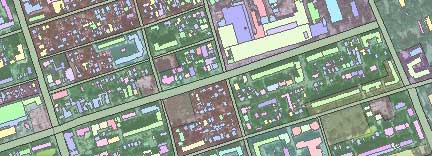Sat-Sun: Non-working days
Types of Deposits: Main Classification
There are places where large concentrations of valuable components (desired deposits) have been found. A deposit may have several such concentrations. Areas with small amounts of ore are called ore (mineralized) points. Depending on the density of the mineral resources, deposits are classified as large, medium, small, or unique.
There are 3 main groups:
- Metamorphogenic deposits;
- Endogenous (hypogenic) deposits;
- Exogenous deposits.
Endogenous deposits have formed due to the internal thermal energy of the Earth, while exogenous deposits have formed under the influence of solar energy received by the Earth's surface.
Considering genetic types and metals, and combining related deposits with similar formation conditions, let's examine the following groups as examples:
- Rare metal deposits associated with pegmatites;
- Metamorphosed deposits:
- Graphite deposits;
- Manganese deposits;
- Uranium and gold ore deposits;
- Iron ore deposits.
- Metamorphic deposits;
- Weathering deposits:
- Infiltration deposits (uranium, copper, etc.);
- Residual deposits (bauxite, manganese, nickel, etc.).
- Magmatic origin deposits:
- Sulfide copper-nickel deposits;
- Segregation deposits (chromium, iron, etc.);
- Hystermagmatic (fusive) deposits.
- Hydrothermal origin deposits:
- Large metasomatic polymetallic deposits;
- Copper sandstone deposits;
- Lens-shaped massive sulfide deposits of copper, zinc, and lead;
- Disseminated copper and molybdenum ore deposits;
- Nodal, small vein, and tubular deposits of rare, non-ferrous, and minor metals, grouped by genetic characteristics;
- Vein and genetically similar deposits of zinc, lead, tungsten, gold, tin, etc.
- Skarn (contact-metasomatic) deposits;
- Sedimentary origin deposits:
- Layered sedimentary deposits of manganese; iron, aluminum, etc.;
- Placer deposits of gold, diamonds, rutile, magnetic iron, etc.
How is Preliminary Exploration of a Deposit Conducted?
Primarily, drilling is conducted. Additionally, deep trenches, small mines, and adits are used. This is done to ensure the precise structure of the deposit and to obtain technological samples.
Ore Quality, Ore Quality Assessment. What is Prospecting for Non-Ferrous Metal Deposits? Exploration Methods.
Perhaps the main factor in the outcome of geological exploration is the assessment of ore quality. Primarily, it is based on an accurate and detailed description of the composition, properties, and quantitative ratio of the mineral mass. The exploration of new non-ferrous metal deposits involves very thorough laboratory and technological analysis of the minerals since the entire process of processing and further use of the ores depends on it. For this purpose, chemical analysis is most often used, determining the percentage content of valuable components and the presence of harmful impurities.
Contrary to the popular belief that thorough laboratory research of ores is unnecessary in modern conditions, it should be noted that for all types of ores, regardless of their appearance and the seeming simplicity of conclusions, the methods and technologies for their processing can differ significantly. Based on this, we conclude that this stage in the development of deposits should not be ignored to avoid unforeseen consequences and the production of low-quality processed products.
Aeromagnetic Survey as a Method for Prospecting Metal Deposits
Aeromagnetic surveys are conducted not only from helicopters but also from quadcopters. This method is effectively used for exploring inaccessible and remote areas of the Earth, and it is also safe for life.
Ore Grades, Their Qualities, and Study
At most deposits of non-ferrous metals, several grades of ore are identified. This is determined through the analysis of their mineral and chemical composition, as well as considering some physical and structural features. Natural types of ores are identified and then industrial (technological) types and grades are selected from them. In specialized laboratories, the technological properties of the selected industrial types must be studied to determine the processing schemes and main quality indicators of the resulting products. Sometimes, ores that do not differ in appearance are classified into grades. Based on chemical analysis data, the content and ratio of harmful impurities can be seen.
Ways of Forming Ore Grades
Due to weathering, changes occur in deposits (supergene processes). This process leads to the formation of new grades of the desired mass, having a completely different mineralogical composition.
In zones of supergene alteration (zones of secondary enrichment or oxidation), the technological properties of ores often differ from similar ores in other areas.
Sulfide Ores, Their Importance, and Methods of Extracting Pure Substances
Sulfide ores are of great importance in metallurgy and the mining-processing industry. They have the oldest geological age because they formed as a result of magma solidification. Several valuable minerals are present in sulfide ores. Such ores of heavy non-ferrous metals are called polymetallic ores. There are also oxidized ores, which are the product of oxidation and weathering (secondary transformation).
The material (rational) composition of ore is extremely important for calculations in metallurgy, and it is expressed as a percentage of chemical compounds or minerals. For example, copper in sulfide ores constitutes 1%, while in oxidized copper ores it is 2%. The minimum industrial content of arsenic in sulfide arsenic ores is 2%, whereas in oxidized ores it can be up to 6%.
Despite the low content of valuable minerals, some ores have production value, but these same sulfide ores in an oxidized state (arsenic ores, oxidized zinc ores, etc.) are used only if they have a high metal content.
Gold in ores is present as a solid solution with other metals. It is extracted from the ore using modern technologies, specifically through ammonia-cyanide leaching. This method allows gold to be separated much faster than before and significantly reduces reagent costs.






